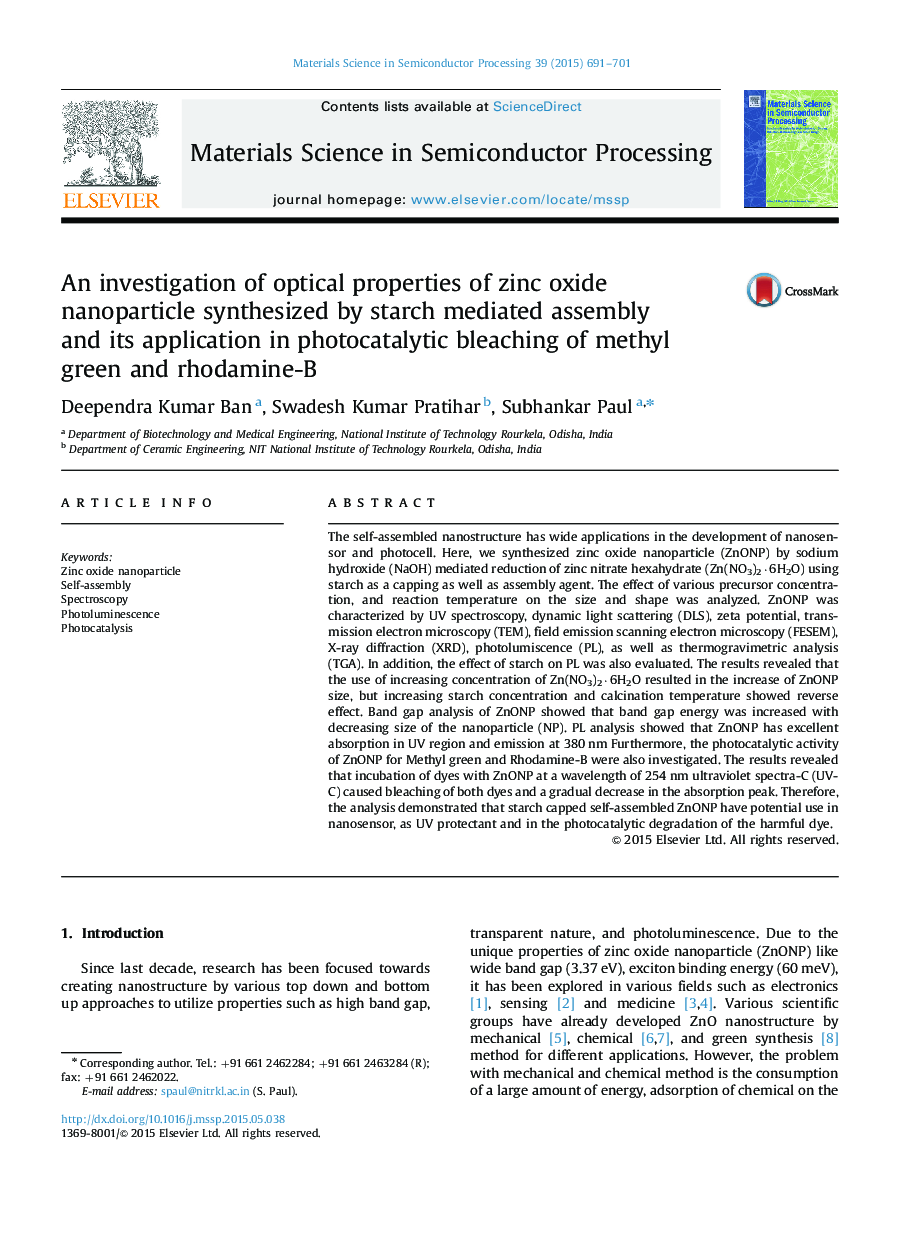| Article ID | Journal | Published Year | Pages | File Type |
|---|---|---|---|---|
| 7119199 | Materials Science in Semiconductor Processing | 2015 | 11 Pages |
Abstract
The self-assembled nanostructure has wide applications in the development of nanosensor and photocell. Here, we synthesized zinc oxide nanoparticle (ZnONP) by sodium hydroxide (NaOH) mediated reduction of zinc nitrate hexahydrate (Zn(NO3)2·6H2O) using starch as a capping as well as assembly agent. The effect of various precursor concentration, and reaction temperature on the size and shape was analyzed. ZnONP was characterized by UV spectroscopy, dynamic light scattering (DLS), zeta potential, transmission electron microscopy (TEM), field emission scanning electron microscopy (FESEM), X-ray diffraction (XRD), photolumiscence (PL), as well as thermogravimetric analysis (TGA). In addition, the effect of starch on PL was also evaluated. The results revealed that the use of increasing concentration of Zn(NO3)2·6H2O resulted in the increase of ZnONP size, but increasing starch concentration and calcination temperature showed reverse effect. Band gap analysis of ZnONP showed that band gap energy was increased with decreasing size of the nanoparticle (NP). PL analysis showed that ZnONP has excellent absorption in UV region and emission at 380 nm Furthermore, the photocatalytic activity of ZnONP for Methyl green and Rhodamine-B were also investigated. The results revealed that incubation of dyes with ZnONP at a wavelength of 254 nm ultraviolet spectra-C (UV-C) caused bleaching of both dyes and a gradual decrease in the absorption peak. Therefore, the analysis demonstrated that starch capped self-assembled ZnONP have potential use in nanosensor, as UV protectant and in the photocatalytic degradation of the harmful dye.
Related Topics
Physical Sciences and Engineering
Engineering
Electrical and Electronic Engineering
Authors
Deependra Kumar Ban, Swadesh Kumar Pratihar, Subhankar Paul,
